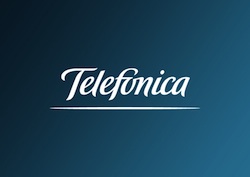A Telefónica Digital-commissioned report has backed up its decision to combine cellular technology and small-scale RF mesh networking in order to connect smart meter systems.
The report, published by the Centre for Communications Systems Research at the University of Surrey, said the development of cellular technology will support smart meter systems as the technology evolves to be able to provide high speeds, rich data services and an expansive coverage footprint.
The operator’s UK arm won the world’s biggest M2M contract in August when it acquired two out of the three communications service provider lots within the overall UK Smart Meter Implementation Programme (SMIP) tender.
Its solution, based on O2’s cellular network, is backed up by wireless mesh technology belonging to Sweden-based firm Connode.
Besides highlighting the obvious benefits of using cellular providers to power M2M smart meters, the research has found that no single technology available today is able to satisfy all the engineering and business challenges in order to provide nationwide coverage.
2G mobile communications are expected to be phased out from next year onwards, which would mean that the spectrum could be refarmed for GPRS M2M connections.
GPRS currently offers the best starting point for the WAN segment of the smart metering solution, although the report suggests that higher speeds can be sought from EDGE or 3G if commercially viable.
If operators in the UK continue to engage in infrastructure sharing, GPRS will cover a maximum of 98 percent of the UK population. The University of Surrey feels that combining cellular technology with small-scale wireless mesh is the best solution to covering the remaining part of the country.
“Providing service to machines which could be in extreme radio environment is not cost-effective as a stand-alone network. The remaining few percentage coverage should be provided by RF Mesh network technology which can integrate and interoperate with cellular system and provide similar carrier-grade security and reliability as in a cellular network,” wrote Professor Rahim Tafazolli, author of the paper.
Wireless mesh networks are meant for specific and limited areas like homes and where there is insufficient network infrastructure available and the radio environment is extremely difficult, but is not possible for wide area coverage due to the excessive delay that can be caused by interference, as well as instability in capacity.
In order to meet the 2020 target set by the Department of Energy & Climate Change (DECC), the report also suggests increasing the number of base stations.
Have you voted for your European Operator CTO of the Year? Click here to vote.



